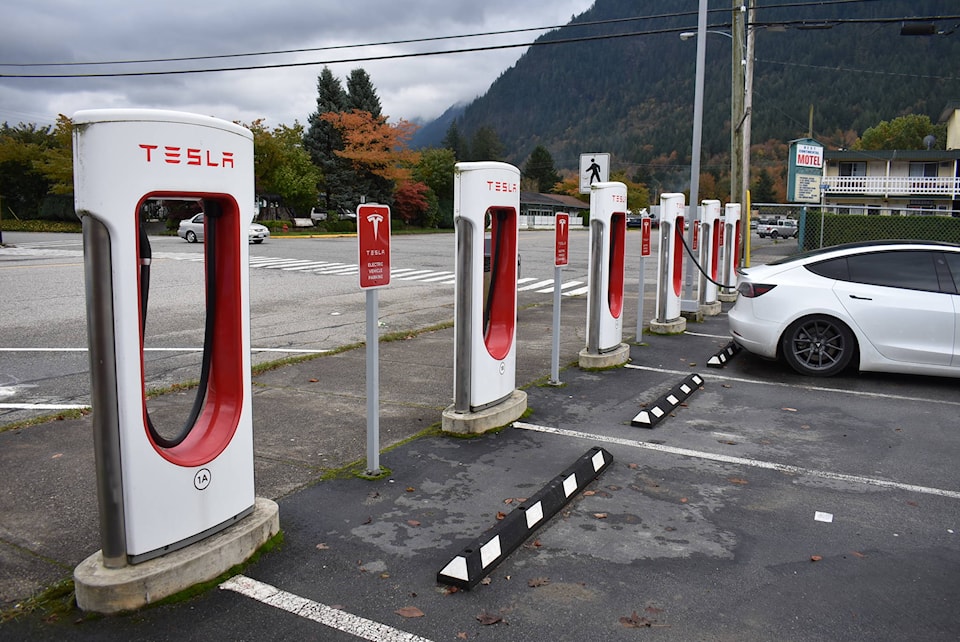Central Okanagan Public Schools continues to get a passing grade on efforts to reduce the carbon footprint of local public schools.
Harold Schock, school district energy and sustainability manager, says they saw energy use levels drop by six per cent from 2007 to 2012, 18 per cent less by 2016 and is on target to meet the 40 per cent reduction from 2007 levels by 2030, as mandated by the provincial government under the Climat Change Accountability Act.
“We have taken a big chunk towards achieving that 40 per cent target early as we are already in the 30 per cent range,” Schock told the board of education planning and facilities committee meeting on Wednesday (June 3).
Helping reach that target are several factors, not the least of which is new schools built since 2007 in the district are using up to 80 per cent less energy than their predecessors.
While he said some school districts have voiced concerns about meeting the energy reduction targets because of a lack of energy efficiency project funding, Schock said Central Okanagan Public Schools acknowledges those same issues but has adopted a “can-do attitude” looking forward.
“We take these challenges and actively seek out opportunities, finding funding and partnerships where we can,” Schock said.
“What we are doing is way ahead of the curve.
“We have replaced boilers in schools, which are high energy users, changed out lights for LEDs, done lots of creative things to reduce energy working within budget restraints.”
Schock says the school district is also looking to participate in a FortisBC pilot project, supported by a federal government grant, to provide electric vehicle charging stations at schools for staff, which would both allow mean fuel cost and reduction for staff and allow the school district to earn low carbon credits.
Right now, Fortis wants to install 10 charging units each at 300 chosen school sites, which could generate $100,000 in low carbon credit revenue for the school district.
“For us to (raise money) from low carbon credits is the same way Elon Musk makes his money. It’s not on Tesla cars but on the sale of carbon reduction credits. We can leverage that opportunity in the same way he can.”
He said when the new H.S. Grenda and Canyon Falls middle schools were built, construction cost shortfalls prevented the solar panels from being added, but the roof structure was designed for their installation at a later date.
“We since found the funding with the monetary aspect of an energy efficiency award presented to us by Fortis and the solar panels are in place at Canyon Falls, and we hope to do the same if we can find a partner for H.S. Grenda,” Schock said.
He said the Canyon Falls’ solar panels generate the equivalent of enough energy to power five single-family homes.
The school district has also purchased three electric-powered school buses that will be operational this fall, generating further carbon reduction credits.
“We are saving money with projects like this and it is money we can put back into schools and classrooms,” he said.
He said geo-exchange systems installed for nine schools enable energy from the Okanagan summer heat to be stored underground and used as a heat supply source in winter.
“We are saving money and reducing greenhouse gases. We just pay for the transfer of the energy or heat from underground to the classroom,” he said.
He noted that Canyon Falls, along with Mar Jok and Chute Lake Elementary, are among the most energy-efficient schools across Canada.
Schock said there are several benefits of the school district’s energy-saving initiatives — lower school operating costs, a safer environment for students and staff, improved learning conditions, reduced greenhouse gas emissions, reduced landfill waste through recycling and composting, and setting an overall positive example for environmental responsibility and sustainable lifestyle behaviour.
The committee applauded the energy-saving efforts of Schock and his team, led by director of operations Mitch Van Aller.
Trustee Lee-Ann Tiede questioned why solar panels would be considered a ‘luxury item’ by the government when they can generate so many benefits for new schools.
“I look forward to when we get there where solar panels are considered an accepted part of the school buildings we build,” she said.
Tiede also raised the issue of the battery life expectancy for electric school buses and the cost of the battery disposal, which Schock said remains “unchartered territory” in a newly developing industry. Schock said manufacturers have told the school district the batteries should last between 10 and 15 years.
“The batteries put in Tesla cars have proven to be a lot better than anticipated…we are not going to see that on a bus compared to a Tesla car but we will be monitoring that closely and we could be pleasantly surprised how long those batteries last,” he said.
